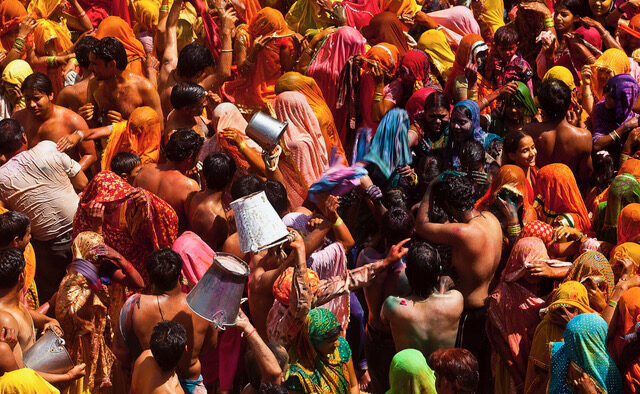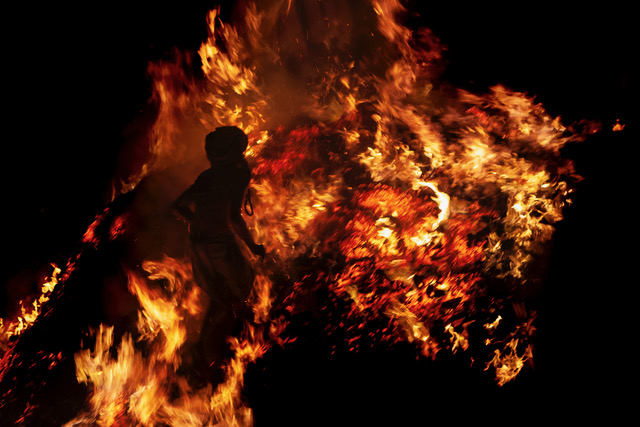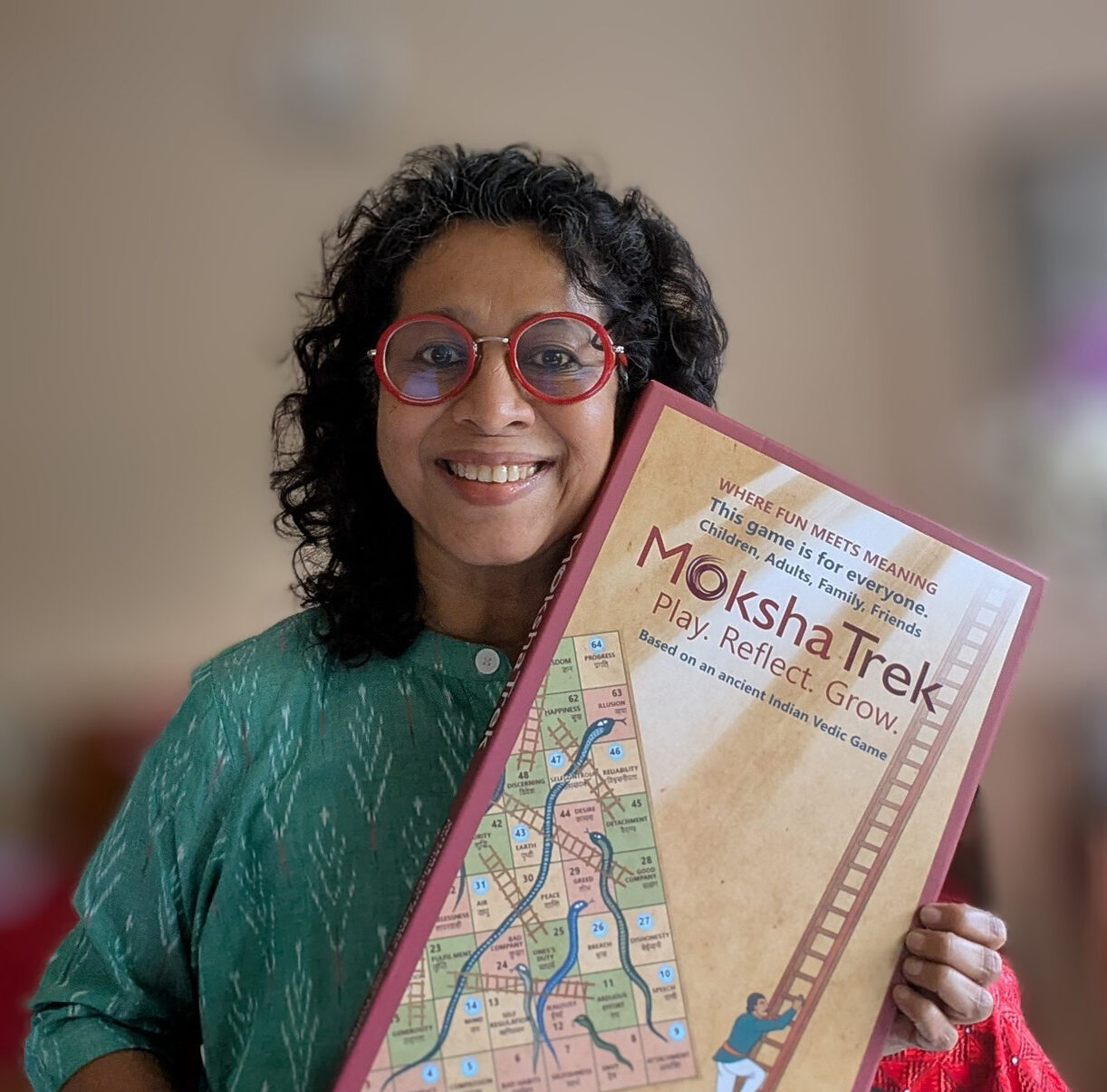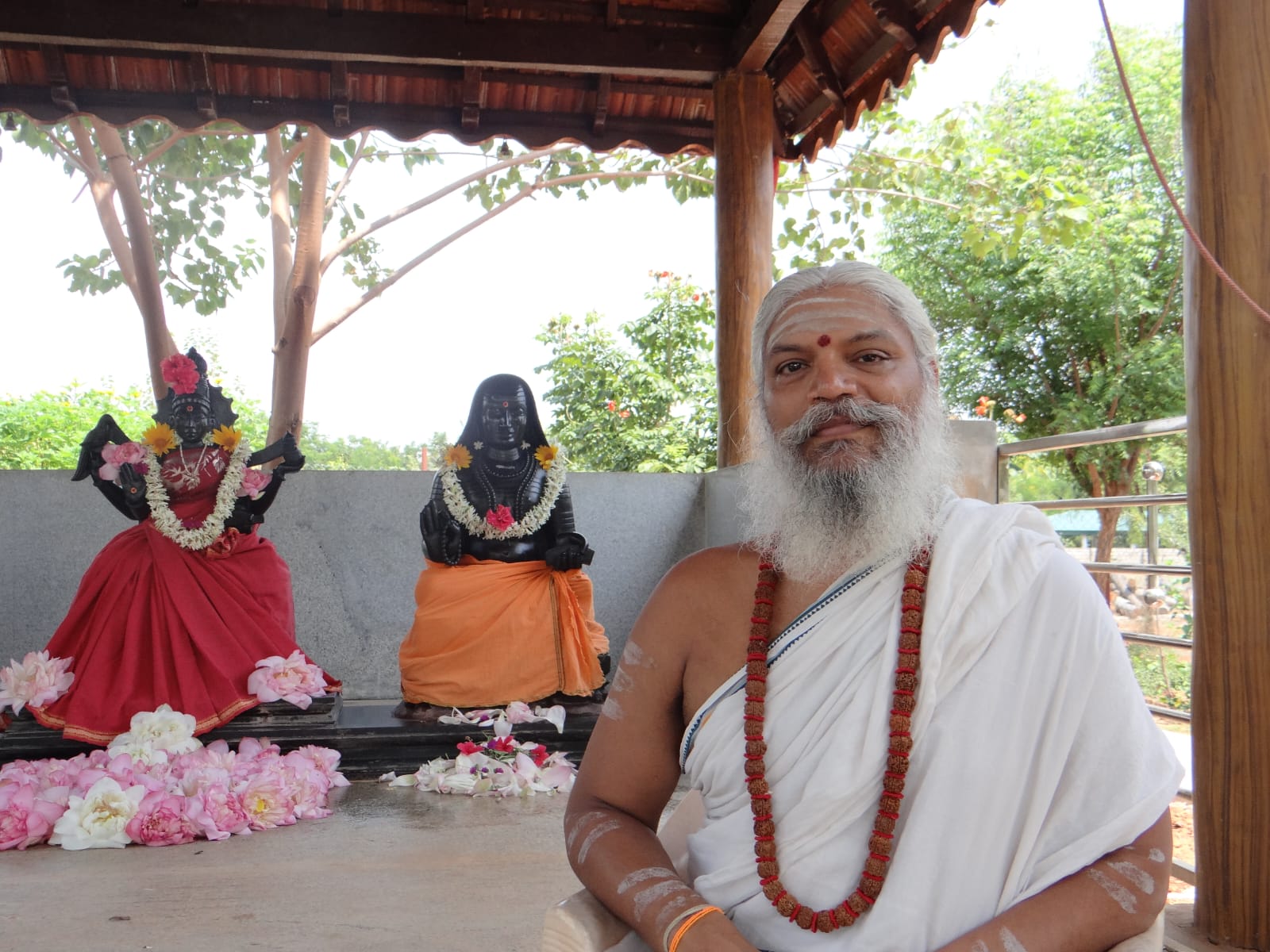“Bhajans and bhang. Gulaal and gopis. Lathis and Love. Holi in Braj is not an experience for the faint-hearted. A festival that has somewhat lost its lustre around the country is celebrated in its wholesome regalia of colour and laughter in Mathura. The beat of drums matches the thick swathe of colour that hangs around every living being. The ground is a slushy battlefield aided by bhang that is generously consumed and distributed. Add to that the provocative lyrics and lathi-charging women, and holi suddenly assumes more meaning than just the festival of colours,” writes Udit Kulshreshta a photographer who has captured Braj for five years.
Holi, the Festival of Colors, is one of the most vibrant and deeply rooted religious celebrations in India. While it is observed across the country, nowhere is it as elaborate and unique as in the land of Lord Krishna—Braj. In the district of Mathura, where Krishna is believed to have been born, Holi is not just a single day of revelry but an extended festival lasting over a week, celebrated across various villages in Mathura and Vrindavan.
Traditionally, Holi marks the end of winter and is observed on the last full moon day of the lunar month of Phalguna (Falgun). In Krishna’s sacred geography—Mathura, Vrindavan, Nandgaon, and Barsana—the festival takes on a deeper meaning, weaving together ithihasa, devotion, and an explosion of colors. The main day of Holi, also known as Dhuli in Sanskrit (or Dhulheti, Dhulandi, Dhulendi in different regions), is when people joyfully throw coloured powders (gulaal) and water infused with tesu flowers (also known as Palasha) at one another, turning entire streets into a canvas of bright hues.
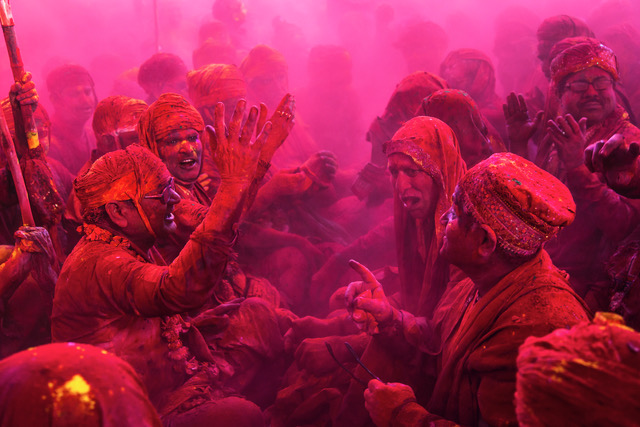
Kulshreshta says that “Nothing quite prepares you for the overwhelming sensory experience of Braj ki Holi. Everywhere, color and chaos reign supreme. Celebrations can last for more than two weeks, with a thick haze of gulaal covering everything in sight. The air is filled with the scent of bhang (a cannabis-based drink), freshly made sweets, and the mingling sounds of devotional songs, laughter, and festive chants.”
“The atmosphere is one of pure energy. The colors, the chants, the music—everything blends into a surreal experience. In Mathura, Holi is not just a festival; it’s an act of devotion, a retelling of Krishna’s playful and divine leelas.”
Traditions Unique to Krishna’s Land
Holi in Braj is not just about color play—it is steeped in customs and traditions that have been preserved for centuries. Some of these are unique to Mathura and Krishna’s pastimes. Udit has photographed:
- Lathmar Holi (The Stick Holi): Celebrated in Barsana, the village of Radha, this event sees women—who have prepared for weeks—chasing men with long sticks (lathis), playfully beating them as a form of ritualistic fun. The men protect themselves with shields, reenacting an age-old tradition of Krishna teasing Radha and the gopis.
- Kapda Phad Holi (The Cloth-Tearing Holi): Observed in Mathura, this event turns the tables on men. Married women, in a dramatic reversal of roles, tear away the clothes of men who attempt to pass through their village—a playful act of vengeance for the teasing that unmarried women endure in earlier festivities.
- Ladoo Holi: A lesser-known but significant event, this marks the beginning of Holi in Mathura. Ladoos (Indian sweets) are distributed in the temples, symbolizing the sweetness of Krishna’s love and the joy of the festival.
- Nandgaon Holi: The men from Krishna’s village, Nandgaon, invite the women from Barsana to play Holi. This follows a traditional invite, read aloud on paper, and the celebrations unfold with colors, chanting, and joyous teasing between the villagers.
- Temple Holi: In the Nandgaon temple, priests, known as Goswamis, are dressed in orange pagris (turbans). Their role is to drench devotees in colour, ensuring that no one leaves untouched by the spirit of Holi. “Their job is to colour everyone,” Udit explains.
“It’s a sight to behold—priests showering people with organic colours made from Tesu flowers, boiling the petals to create a warm, fragrant dye. It’s a ritual deeply connected to devotion.”
Fire-Walking and the Spiritual Connection to Holi
Beyond color, Holi in Braj has deep spiritual undertones. In the village of Taleim in Mathura, a priest walks across fire in a stunning ritual that showcases devotion and faith.
“Forty days before Holi, the priest undertakes a strict fast and performs intense prayers. Then, on the early morning of Choti Holi at 3 AM, he walks across a fire the size of a stadium. He wears no protective clothing—just a simple dhoti. The heat is unbearable. I was standing on the first floor and felt my arms burn, yet he walked calmly through it. It is beyond explanation,” Udit recalls.
Such events remind us that Holi is more than a festival—it is a testament to faith, devotion, and an age-old spiritual heritage.
A Festival Preserved in Time
In some villages of Haryana, close to Mathura, Holi is observed differently. Here, women and children do not directly participate but watch from balconies and rooftops while men on the streets engage in colour play.
“There is something striking about watching from a distance—how the colours swirl, how the chants rise, how joy and devotion blend together,” says Udit.
At the Banke Bihari Temple in Vrindavan, priests throw colours in the air as soon as they catch sight of their beloved Krishna.
“The moment Bhagwan’s darshan is had, hands go up in surrender, and colors rain down,” Udit shares.
Holi in Braj is not just about colour; it is a re-enactment of Krishna’s eternal play with Radha and the gopis, a celebration of friendship, love, and devotion. While modern-day Holi has diluted some of these traditions, the heart of Braj ki Holi remains untouched—a festival where fun, faith, and festivity merge seamlessly, preserved in time.
(Video Interview: https://youtu.be/ACN34rgLNFs?si=C375pel3p-Msw-ET)
